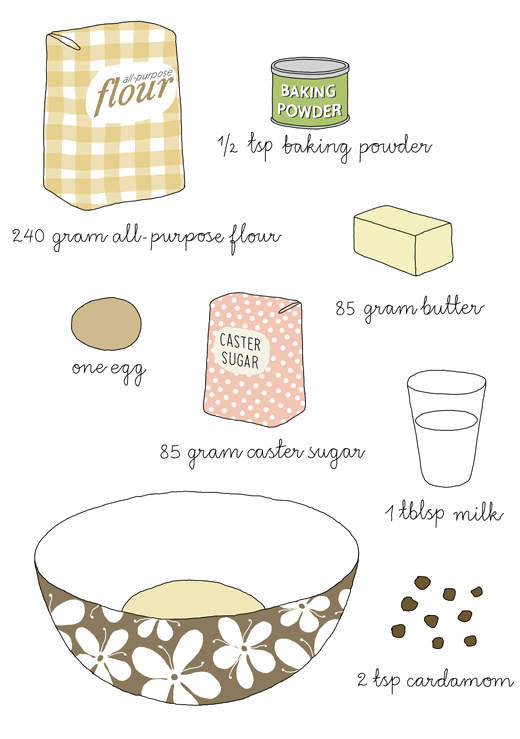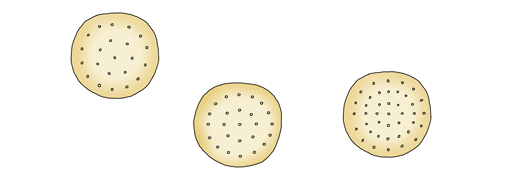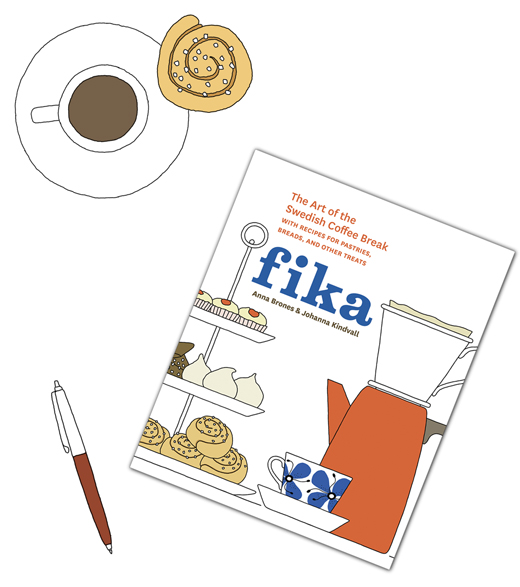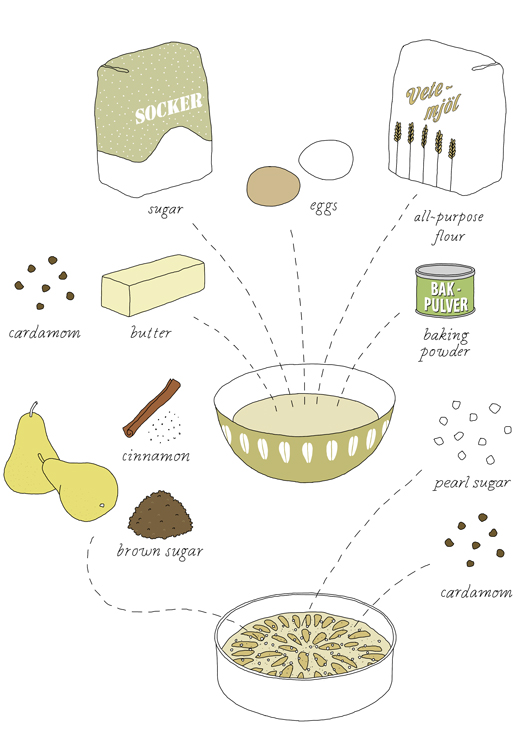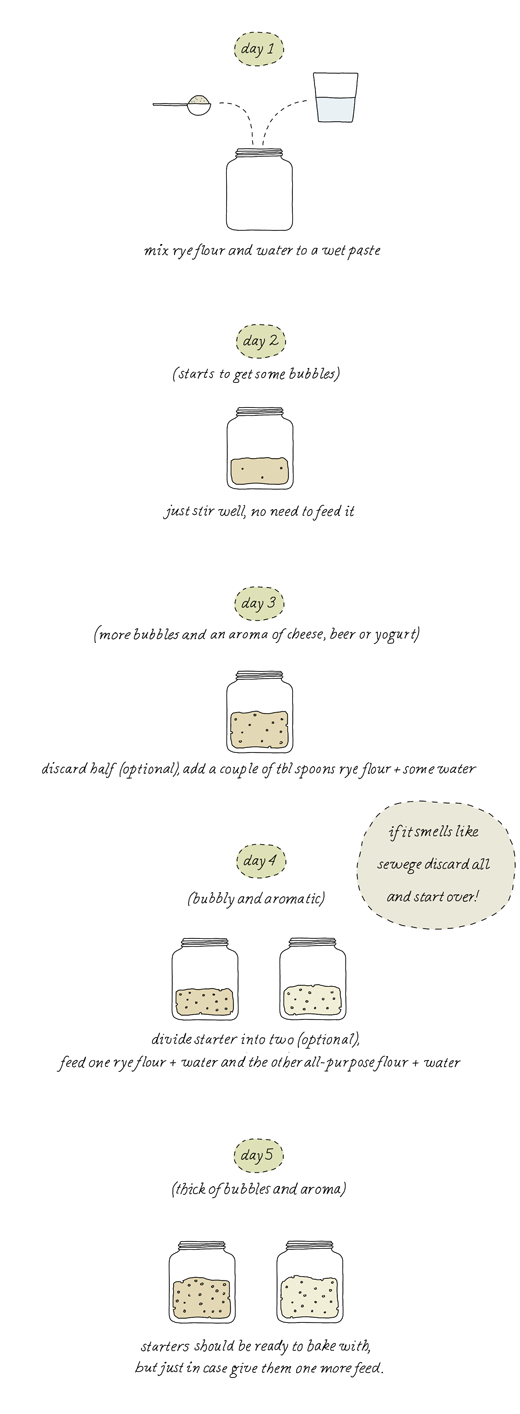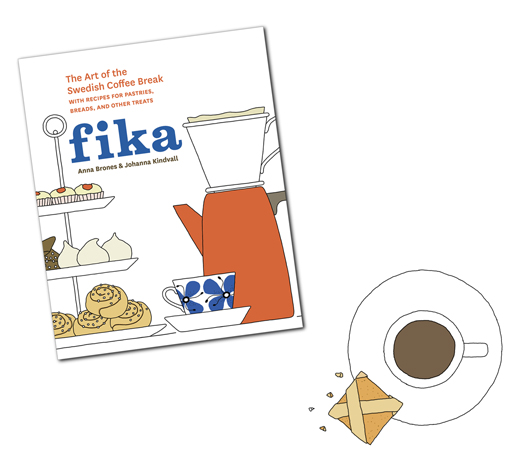
Fika – The Art of the Swedish coffee break is finally here. It has been a long and wonderful journey together with my dear collaborator Anna Brones. We both thought it would be nice to share our stories behind the scenes on how we created this book. Please read Anna’s version here.
The book Fika is a celebration of the Swedish coffee break, fika. Something that most Swedes do daily, sometimes even twice. At work, at home or together with a friend, it doesn’t matter where and when and how, for a Swede this break is essential. And the best fika comes with a treat, sweet or savory.
To have a fika was something I really missed when I came to work in an architecture office in NYC several years ago. Colleagues always drank their coffee alone at their desks. Eventually some agreed to share a coffee break with me, but it almost always meant we were hanging out by our desks, sharing a muffin. I even started a kaffekassa (it’s a box where you collect money for coffee and cakes) which I shared with my closest friend at the office. And we used it for daily treats.
So when Anna, who is a Swedish/American food writer and a dedicated coffee drinker, invited me to collaborate on this project I instantly said yes. It was really about time the world learned about the art of fika.
For the proposal, I helped Anna choose a few recipes that we thought symbolized homemade fika. I illustrated them and included a few other illustrations that worked with Anna’s proposal.
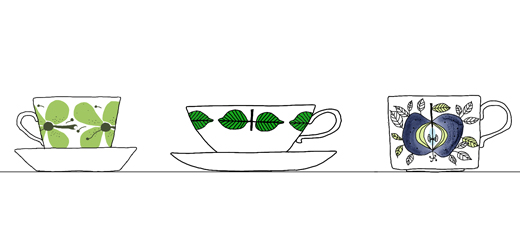
After some edits back and forth we were ready to ship the proposal out to an extensive list of publishers and agents (yes some publishers still want actual printed copies). We both continued our different lives, Anna in Portland and myself in the East Village. Anna reported some rejections but otherwise nothing. We were quite cool about the whole thing and we talked about other potential projects. Just when we both were about to start working on the book, The Culinary Cyclist (Elly Blue Publishing 2013), I got an email from Kaitlin Ketchum, editor at Ten Speed Press. She had just been treated to a fika and remembered our proposal. A couple of months later we had a book contract.

When it was time to start, I was just moving into our new place in Brooklyn, which was still under construction. With no functional kitchen, no gas and no water.
Yes I panicked!
But just a few days later I had a working stove, a sink with running water and my old drawing desk as a baking table. Not particularly perfect but I learned that to develop fika recipes during construction wasn’t that bad. In fact it was kind of perfect as there was always something sweet to share with the workers (mostly my husband, our friend Frank and me) when it was time for fika, which we held at 10am and 3pm every day, in the sun on the stoop or on rainy days sitting inside on paint buckets.
The recipes we picked for the book are cakes and cookies that we grew up with, cakes that we regularly bake ourselves or treats we always enjoy eating. Classics like vetebullar (Cinnamon & Cardamom Buns, page 26) but also some new (for e.g. Hazelnut & Coffee Cake page 60). We probably developed over 70 recipes and almost 50 made it into the book. Some of the rejections weren’t bad, they just didn’t fit in. They were not Scandinavian enough or too much like a dessert. Some classics where ditched as they weren’t things we actually bake ourselves, for e.g. the Swedish konditori classic, wienerbröd (which is what a Swede and Danish calls a danish). However one day I will master the art of baking puff pastries!
Anna worked on half the recipes in her tiny Paris kitchen, while I worked on the other half. At some point we swapped our recipes and continued developing the other person’s recipe.
Over the summer, Anna and I spent one week together in Sweden and we worked on a few recipes together for e.g. Fyriskaka (a classic apple cake with cinnamon, page 94). It was summer and we enjoyed having chilled rhubarb cordial (page 82), coffee and cakes every day in our garden, overlooking the pond and enjoying Swedish summer fika at its best.
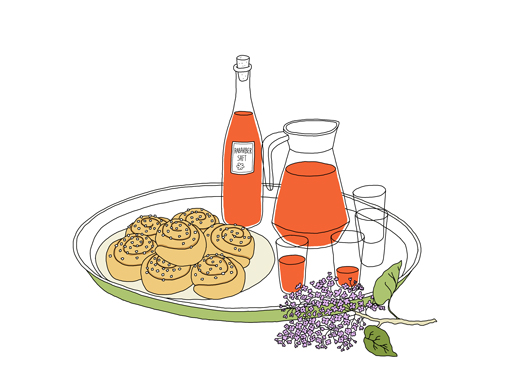
The rest of the time we developed the work by having regular Skype meetings, sharing notes and baking progress with pictures on our communal work site, that I had set up as a way to keep track of the work.
During the whole process I was constantly drawing cakes and cookies. But at one point I decided to take a break from baking to spend time drawing. So in the beginning of Autumn 2013, I isolated myself in our country cottage with a pantry well stocked with cookies and drew nonstop for over a month. I barely saw anyone, and left my desk only to have something to eat or put a new log into the fireplace. I kind of liked it.
At about the same time, Anna was working on the content and when I was back in Brooklyn I could concentrate more on helping her with proofreading and editing. I don’t know how many times we went through everything page by page, chapter by chapter and recipe by recipe. I also corrected, changed and added several new illustrations when we at the end of this journey, when we were working more closely with our editor Kaitlin and Elizabeth Stromberg, our book designer.
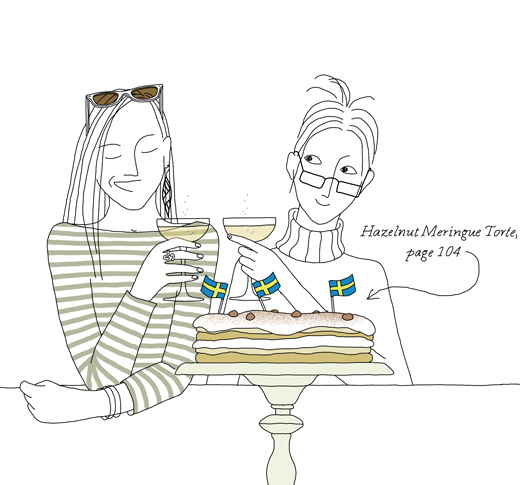
Now with the book in my hand, it’s nice to see how well our work was treated. Kaitlin, Elizabeth and all the rest at Ten Speed Press, you did a beautiful job turning our vision into this book.
I’m especially thankful for Anna who invited me into the project and who wrote about it so beautifully. And for Kaitlin who remembered our proposal when she had her first fika moment!
I hope you will enjoy this book and that it will inspire you to take that daily break, we Swedes call fika.
Want your own copy of Fika?
In celebration of Fika’s release, we are giving away a couple of books! Post a photo of your fika on Instagram, and be sure to hashtag #artoffika as well as tag @johannakindvall and @annabrones so we are sure to see your photos. Not on Instagram? Tell us about your favorite thing for fika in the comments below.
Note that we can only ship books to North America. Entries must be received by April 14, 2015.
*
upcoming Fika events
Paris
Fika launch party at La Tresorerie/Cafe Smörgås
April 11 at 10am-5pm,11 Rue du Château d’Eau, 75010 Paris.
Anna will be there and treat you special treats!
Manhattan
Fika at Fika Tower’s Loft – 824 10th Avenue btw 54 and 55 th Street
Monday May 4, at 3 to 5pm
Anna and me will both be there, with books while having coffee and cookies.
Brooklyn
Fika @ Budin
Wednesday May 6, at 5 to 7pm , 114 Greenpoint Avenue, Brooklyn
Anna and me will both be there, with books while having coffee and cookies.
Fika at the bar of 61 Local
May 7, btw 6 – 8 pm, 61 Bergen Street, Brooklyn
Anna and me will be there, with books while having beer and cookies.
Seattle
Fika at Book Larder
May 12, at 6:30 to 8pm, 4252 Fremont Ave N, Seattle.
Anna will be there and talk Fika
The book is available in many bookstores in the US and around the world. You can also find it in most online bookstores: Random House, Amazon (US), Amazon (UK), Barnes & Noble and iBooks.
*
talks about fika
NY Times Style Magazine
Huffington Post
EcoSalon
Eater
Cool Hunting
edible Michiana
Interview with both Anna & me @ Slow Travel Stockholm
Saveur Magazine
